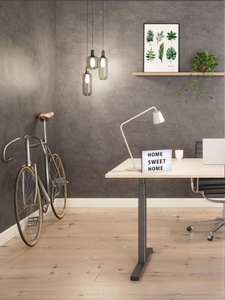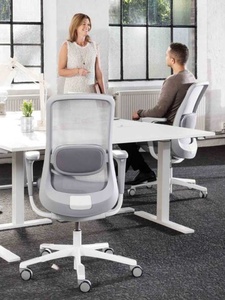The Health and Safety Review looks at how three Irish companies solved problems in the workplace caused by chairs, by mouse use and by desk design.
An article featured in the Health & Safety Review
The journal of record on health safety and environmental issues that affect the workplace
September 2009
‘Non-accidental injuries’ to backs and wrists
‘Non-accidental injuries’ is a clever American phrase used to describe the pain and suffering of office workers who suffer back pain from sitting on unsuitable chairs, or finger and wrist pain from mouse use.
Collectively, such injuries fall into the musculoskeletal injury category. As Professor Sue Cox writes in Tolley’s Office Health and Safety Handbook: “For non-manual occupations the leading cause of occupational ill-health was musculoskeletal disorders.” Below, HSR looks at how three different Irish companies solved problems caused by chairs, by mouse use and by desk design, all of which resulted in workers suffering back pain, wrist pain and other limb disorders.
CHAIR RESOLVES BACK PAIN
Problem
A company engaged in manufacturing was receiving a number of complaints from staff, who said that they were suffering lower back pain and neck/shoulder strain. A physiotherapist from the company’s occupational health department carried out an assessment. The physiotherapist found that the task the workers were required to undertake involved a considerable amount of leaning forward and that the chairs they were using were not providing proper back support.
Solution
The company decided new chairs were required. The company specified that the chairs must ‘fit the person’. Chairs needed to have a sliding seat to accommodate workers of differing heights. The physiotherapist specified that there should be a lumbar pump on the chair, as this gives extra support if required. Having surveyed the market, the company consulted KOS Ergonomic Solutions and chose the RH Logic 300 chair. The chair can be adjusted. It has a seven degrees forward tilt and a 13 degrees backward tilt. KOS, who provided the chairs, also provided training. The chairs have enabled the users to maintain an upright position. The chairs provide full support and allow maximum freedom of movement.
Benefit
The company and the workers benefited. The workers appreciated the efforts and the investment made by the company. In terms of return for the company, complaints ceased and productivity increased.
HELPING A KEY PRODUCTION WORKER
Problem
An employee, who is plays a key role in product development, was often absent from work because of a back problem and neck, shoulder, wrist and forearm pain. The worker’s absence was impacting on the company’s performance in terms of costs (such as sick pay) and productivity.
Solution
The company’s ergonomist contact KOS Ergonomic Solutions, who suggested the RH Logic 400 chair to relieve back pain, a mini keyboard to reduce the user’s working circle and an Anir mouse, which allows the user to maintain a neutral handshake position.
Benefit
The result was that the worker ceased to suffer pain and was able to return to work fulltime.
CLUTTERED DESKS
Problem
A company found that many employees were complaining of both upper limb disorders and lower back pain. The employees used computers intensively and had to handle large quantities of paper, which meant that desks – which were of a standard fixed height – were cluttered. This resulted in stretching and over-reaching.
Solution
The company consulted with its employees. The outcome was that desks were re-designed to allow paper to be within easy reach. It was deemed necessary to create free space on the desk top. To achieve this, all unnecessary computer equipment was moved from the desk top. Using CPU holders, CPUs were mounted to the underside of the desk. Adjustable screen arms were introduced to allow screens to be at the correct height level for the users. When the screen is not in use, the arms allow the screen to be swung to one side. Fixed height desks were replaced with height adjustable desks.
Benefit
The improvements in the design and layout of the desk work areas led to a fall in the incidence of complaints of back pain. Absenteeism was greatly reduced.
(HSR thanks Seamus Kennedy of KOS Ergonomic Solutions for these case studies. Seamus can be contacted at 0504-43341. We thank other readers in the past who have contacted us with solutions to problems and invite others to contact us with their solutions to what are often the ordinary everyday problems of managing health and safety.)
v2© 2009 HSR / HRM















